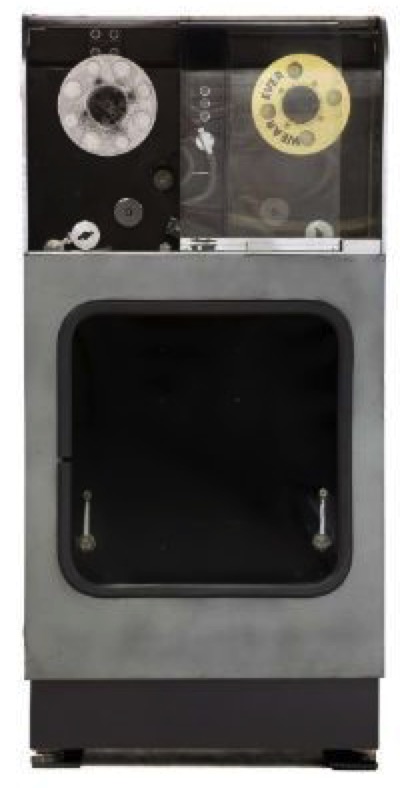History (1951): Univac Introduces Magnetic Tape Media Storage Machine
To replace punched cards
This is a Press Release edited by StorageNewsletter.com on February 23, 2018 at 2:28 pmThis article comes from the Computer History Museum.
1951: Tape unit developed for storage
Univac introduces magnetic tape media storage machine
Univac Uniservo tape drive
(Courtesy Mark Richards)

By the late 1940s computer design engineers recognized that magnetic audio tape technology could be adapted for digital data recording. The Eckert-Mauchly Computer Corporation (EMCC) began development of a recorder that was introduced in 1951, after acquisition of the company by Remington Rand. The Uniservo 1 served as an input-output device to replace punched cards on the new Univac 1 computer. It used a 0.5-inch wide plated phosphor-bronze tape with a linear density of 128 bits per inch and a transfer rate 7,200 characters per second.
At IBM Poughkeepsie engineers experimented with moving tape at very high speeds for fast access to data.
The 3M company developed oxide particle tape to IBM specifications. James Weidenhammer and Walter Buslik designed a vacuum column that buffered a long U-shaped loop of the new tape moving at 100 to 200 inches per second to prevent breaking during rapid acceleration and deceleration.
In 1952, IBM announced its first magnetic tape storage unit, Model 726, for sale with the IBM 701 computer. It rented for $850 a month and could store 2 million digits on 8 inch diameter tape reels.
Magnetic tape became the standard storage technology of the 1950s and continues to be heavily used for archival storage of content in the entertainment industry today, as well as for other general digital storage applications where low cost is more important than fast access.













 Subscribe to our free daily newsletter
Subscribe to our free daily newsletter

